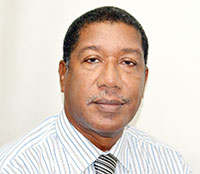THE first institution to train dentists was opened in Baltimore, USA in 1840. Since then there was an increasing tendency for dentists to restore teeth as opposed to extracting them when carious. In fact, the Government of Guyana has that as its priority.
It is known that diseases involving the teeth and gums have afflicted mankind since the beginning of recorded history. As the development of society with progressing scientific knowledge has taken place, so have the prevalence of dental caries and periodontal disease increased in most parts of the world. One can easily recognise that the consumption of more foods that contain refined sugars, as is the case in the so-called developed countries, is a major cause of the decline of oral health over the years. Another important reason is that people generally are too passive when it comes to acceding the principles of prevention. Apart from that, the great majority of persons who have received some form of dental restoration or appliance are not conscious of inherent limitations.
At the turn of the last century, Dr. Black, a pioneer dentist laid down his principle of preparing the cavity before filling material is placed in it. Though empirical and untested in the field, these principles undoubtedly served as a catalyst for the enormous growth in restorative dentistry that has taken place. Today, because of the work of Dr. Black amalgam (silver) fillings are still the number one restorative procedure done.
Part of his contribution involved the tendency for dentists to restore teeth with small carious lesions and even to cut away parts of teeth and restore them as preventative means in the absence of caries.
The pervading belief is that after failing to preserve healthy teeth, one can rarely rely on the modern procedures of dentistry to reverse the results of the neglect. But indeed it is a fatal mistake to expect that oral rehabilitation, however sophisticated, can soundly solve one’s dental problems and that caries could be treated effectively by fillings and therefore that such treatment automatically results in oral health.
Before and after executing a procedure in a patient, many dentists are guilty of not explaining the disadvantages involved therein. Filling material itself is imperfect. For example, in a normal, healthy adult, the force directed on certain parts of a tooth during the process of chewing can exceed 40,000 pounds per square inch. No dental cement or resin is capable of withstanding more than 15 percent of that. In addition, when a tooth has been filled, its chances of further decay become 10 times as great as the one whose enamel is intact.
In other words, filled teeth need 10 times more brushing and flossing than one without filling or caries. This is because the material tissue interface (where bacteria may penetrate) immensely increases the tooth’s vulnerability to decay.
Root canal therapy always involves the removal of the tooth’s nerves and blood vessels, effectively killing that tooth. In the same manner whereby infection by Mycobacterium leprae destroys the nerves in the fingers and toes of a Hansen’s disease (leprosy) victim, causing them to disfigure and absorb into nothing, extirpation of the pulp ultimately results in the absorption of the dead root.
The numerous constraints accompanying dental treatment must therefore be totally acknowledged by patients. Although technology and clinical skills progressively provide a compromise, in the final analysis, the cure for dental ailments lies in changing lifestyles. Initially, there must be enough motivation to lead to the inculcation of a preventative attitude, rather than depend on the dentist to substitute your God-given attributes for man-made implements.
If however, there exists in your individual circumstances the limitations of carious, filled or missing teeth then make a special effort to prevent that happening to the young and innocent with whom you associate or have control of.



.jpg)








